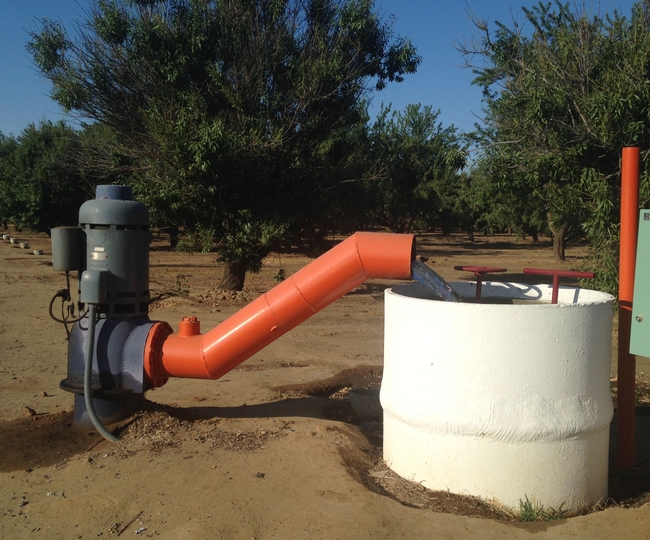The Sustainable Groundwater Management Act (SGMA) is a revolutionary law that will have profound impacts on the state's agriculture industry, however, it also leaves out many implementation details, according to Michael Kiparsky, director of the Wheeler Water Institute at UC Berkeley. Kiparsky authored the article Unanswered questions for implementation of the Sustainable Groundwater Management Act, which was published online by California Agriculture journal.
"SGMA is unprecedented, hugely impactful and a work in progress," Kiparsky said in a videotaped keynote presentation at the 2nd International Groundwater and Agriculture Conference in June 2016. The California Agriculture article is based on his remarks at the conference.
Kiparsky said SGMA defines sustainable management as avoidance of six specific undesirable results:
- Lowering of groundwater levels
- Reduction in groundwater storage
- Seawater intrusion
- Water quality degradation
- Land subsidence
- Impacts on beneficial uses of interconnected surface waters
SGMA relies on local control, with an "enforcement backstop" provided by the State Water Resources Control Board. New local entities called groundwater sustainability agencies (GSAs) will implement SGMA.
In the article, the author outlined what he considers the 7 most important unknowns about California's water future under SGMA.
- Governance. Decisions about governance and institutional design are being made now, so immediate attention to this question is imperative, he said.
- Translating sustainability goals into practice. "In many of the 127 groundwater basins governed by SGMA, the status quo is simply unsustainable," Kiparsky said. "The amount and patterns of groundwater use will need to change."
- Groundwater-surface water interactions. "Many groundwater users are expecting to augment water supplies by buying water within the basins or outside. Markets can be excellent tools for efficiency," he said.
- The role of markets. "Whether and how GSAs can design effective and fair markets as part of their efforts to achieve sustainability will be quite fascinating to observe," Kiparsky said.
- The role of data. SGMA empowers, but does not require, GSAs to collect groundwater extraction data from individual wells. The law requires only aggregated extraction data to be shared and reported to the state.
- The role of the State Water Board. Serving as "backstop" enforcement to the GSAs is a new role for the Board. "We don't know how it will approach the role in practice," Kiparsky said.
- "Significant and unreasonable." SGMA calls to avoid significant and unreasonable impacts, but it doesn't define the meaning of "significant and unreasonable." GSAs will need to define the terms themselves.
Kiparsky ended his article on a positive note with examples of research projects already underway aimed at helping meet the goals of SGMA legislation.
"Both projects illustrate how SGMA already is forcing and enabling creative thinking," Kiparsky said. "This type of creative thinking will be critical for California to implement SGMA successfully and transform from a national laggard in groundwater management into an international leader."
California Agriculture journal is the peer-reviewed research journal of UC Agriculture and Natural Resources.
